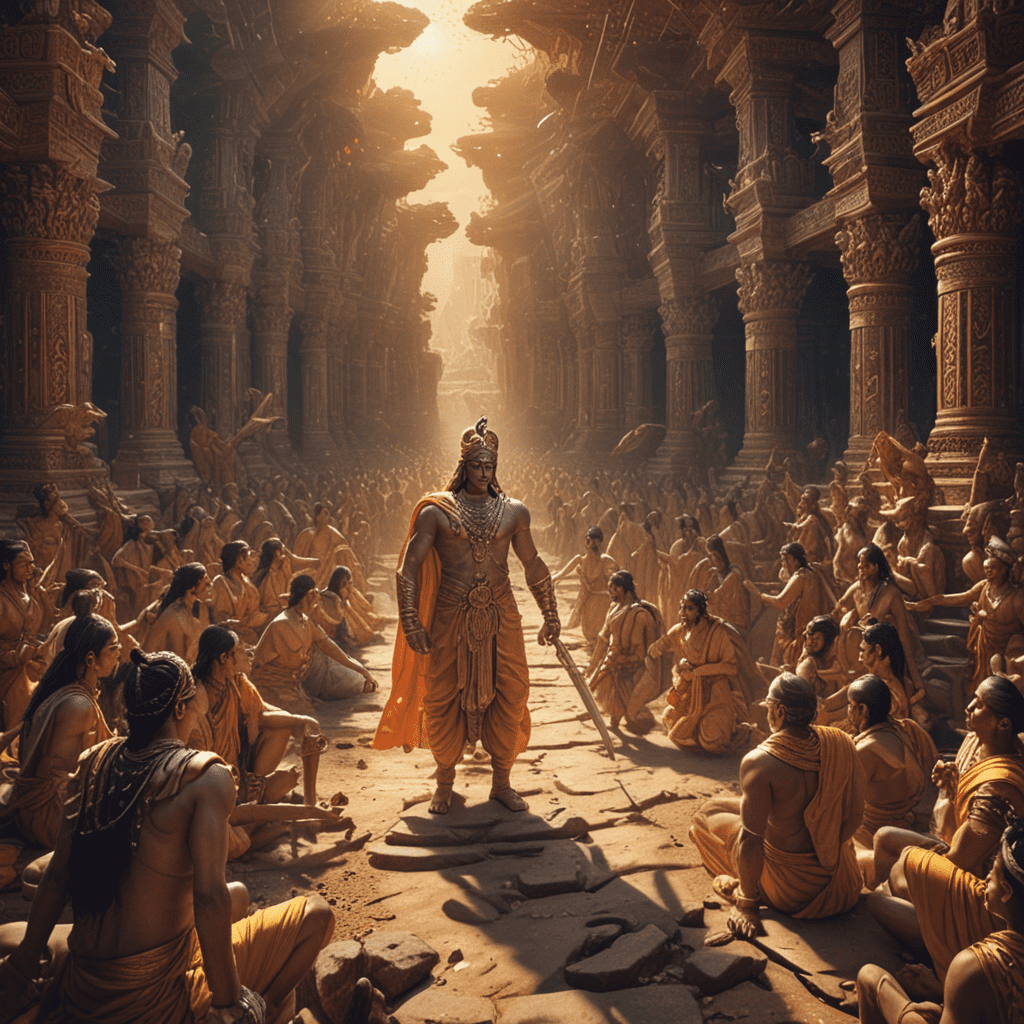The Myths of Armageddon: A Cultural Exploration
I. Introduction
Armageddon is a term that conjures images of cataclysmic battles and the end of the world. Its definition varies across different cultural and religious contexts, often symbolizing the ultimate confrontation between good and evil. In this article, we will explore the rich tapestry of myths surrounding Armageddon, delving into its historical origins, representation in popular culture, and the psychological impact it has on society.
The purpose of this exploration is to unravel the complexities of Armageddon myths and understand their significance in shaping human thought and behavior. We will examine how these narratives have evolved over time and how they continue to resonate in contemporary discourse.
This article is structured to provide a comprehensive overview of Armageddon myths, starting from their historical roots to their modern interpretations and implications.
II. Historical Origins of Armageddon Myths
A. Biblical references and interpretations
The concept of Armageddon is most famously derived from the Christian Bible, particularly the Book of Revelation. This apocalyptic text describes a final battle between divine forces and those of evil, culminating in the end of the world as we know it.
- The Book of Revelation: Often considered the cornerstone for Armageddon mythology, it details vivid imagery of destruction, judgment, and the establishment of a new heaven and earth.
- Other religious texts and prophecies: Various interpretations exist within Christianity, leading to differing views on the nature and timing of these events.
B. Pre-Christian influences on Armageddon concepts
Before the emergence of Christian narratives, concepts of final battles and apocalyptic events were present in various ancient cultures.
- Zoroastrianism and dualism: This ancient religion introduced the idea of a cosmic struggle between Ahura Mazda (good) and Angra Mainyu (evil), influencing later apocalyptic thought.
- Ancient mythologies and apocalyptic tales: Cultures worldwide have their own versions of end-of-the-world stories, often featuring gods, monsters, and cataclysmic events.
III. Armageddon in Popular Culture
A. Representation in literature
Armageddon has been a powerful theme in literature, serving as a backdrop for exploring human nature, morality, and existential questions.
- Novels and short stories: Works like Cormac McCarthy’s “The Road” depict a post-apocalyptic world, illustrating the struggle for survival and the persistence of hope amidst despair.
- Influential authors and their contributions: Authors such as H.G. Wells and Margaret Atwood have woven Armageddon into their narratives, prompting readers to reflect on societal issues and human behavior.
B. Film and television portrayals
The portrayal of Armageddon in film and television often emphasizes action, drama, and moral dilemmas.
- Iconic movies and series: Films like “Armageddon” and “The Day After Tomorrow” dramatize the impending doom, often focusing on heroism in the face of disaster.
- Analysis of themes and messages: These portrayals frequently explore themes of sacrifice, redemption, and the resilience of the human spirit.
IV. The Role of Fear in Armageddon Narratives
A. Psychological impact of apocalyptic myths
Apocalyptic narratives can invoke profound psychological responses. The fear of an impending apocalypse can lead to anxiety and existential dread, influencing individual and collective behavior.
B. Fear as a motivator for social and political change
Throughout history, fear of Armageddon has been utilized as a catalyst for societal movements, urging people to take action regarding social injustices, environmental concerns, and political corruption.
C. The commercialization of Armageddon fears
The fear of Armageddon has become a lucrative industry, as books, films, and merchandise capitalize on apocalyptic themes, further embedding these myths into popular consciousness.
V. Armageddon in Different Religious Contexts
A. Christianity: Varied interpretations of the end times
Within Christianity, interpretations of Armageddon vary widely, from literal beliefs in a physical battle to metaphorical understandings of spiritual warfare.
B. Islam: The concept of Qiyamah (Day of Judgment)
In Islam, Qiyamah signifies the Day of Judgment, where all individuals are held accountable for their actions, echoing themes found in Christian eschatology.
C. Hinduism and Buddhism: Cycles of destruction and rebirth
Unlike linear views of time in Abrahamic religions, Hinduism and Buddhism embrace cyclical concepts, portraying destruction as a precursor to rebirth and renewal.
VI. Contemporary Interpretations of Armageddon
A. Environmental and climate change narratives
In the modern context, environmental degradation and climate change are often viewed through an apocalyptic lens, with the potential for widespread disaster looming over humanity.
B. Geopolitical tensions and nuclear threats
Geopolitical instability and nuclear threats contribute to contemporary fears of Armageddon, as nations grapple with the potential for catastrophic conflict.
C. Technological advancements and their perceived dangers
Rapid technological advancements have fostered new fears, including the potential for artificial intelligence to surpass human control, echoing apocalyptic themes in modern discourse.
VII. The Influence of Folklore and Mythology
A. Local legends and their connection to Armageddon
Folklore often contains elements of Armageddon, with local legends reflecting community fears and aspirations regarding the end of days.
B. Comparative mythology: Similarities across cultures
Examining myths across cultures reveals striking similarities in themes of destruction and rebirth, suggesting a universal human preoccupation with the end times.
C. The evolution of myths in response to societal changes
As societies evolve, so too do their myths, adapting to contemporary fears and realities while retaining core elements of ancient narratives.
VIII. Armageddon as a Metaphor
A. Examining Armageddon as a symbol for personal crises
On a personal level, Armageddon can symbolize individual crises, representing moments of profound change and transformation in one’s life.
B. Social movements and the “end of the world” rhetoric
Various social movements employ Armageddon rhetoric to provoke urgency in addressing societal issues, framing their causes as crucial to humanity’s survival.
C. Artistic expressions of apocalyptic metaphors
Artists often use Armageddon as a metaphor to explore themes of despair, hope, and the human condition, creating works that resonate on multiple levels.
IX. The Future of Armageddon Myths
A. Predictions for the evolution of these narratives
As global challenges evolve, so too will the narratives surrounding Armageddon, adapting to reflect contemporary fears and aspirations.
B. The role of technology and media in shaping new myths
Technology and media will continue to play pivotal roles in shaping and disseminating new Armageddon myths, influencing public perception and understanding.
C. Potential for reconciliation between myth and reality
There exists a possibility for reconciliation between myth and reality, where narratives can inspire positive change rather than merely invoke fear.
X. Conclusion
The myths of Armageddon, deeply rooted in history and culture, reveal much about the human psyche and societal dynamics. As we navigate the complexities of our modern world, these narratives will undoubtedly continue to evolve, reflecting our fears, hopes, and the ongoing quest for meaning in an uncertain future.



